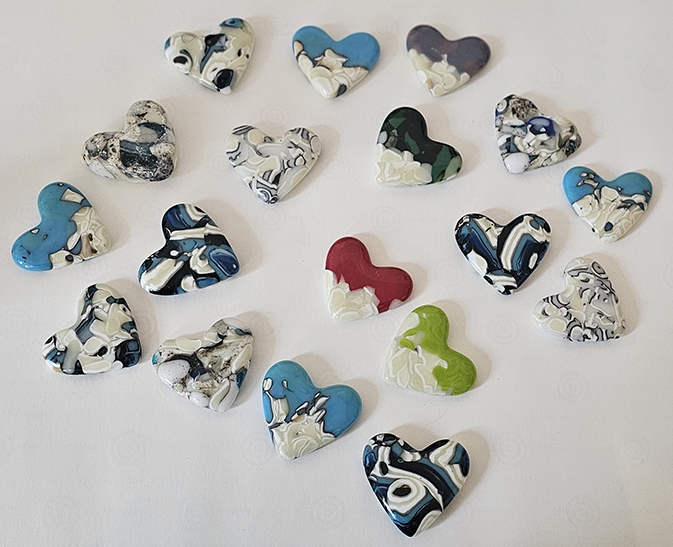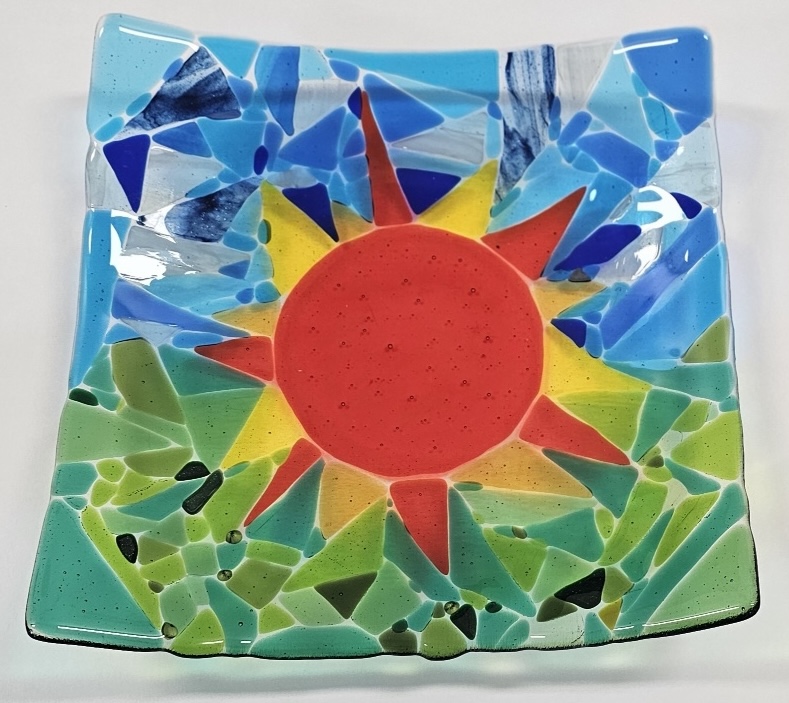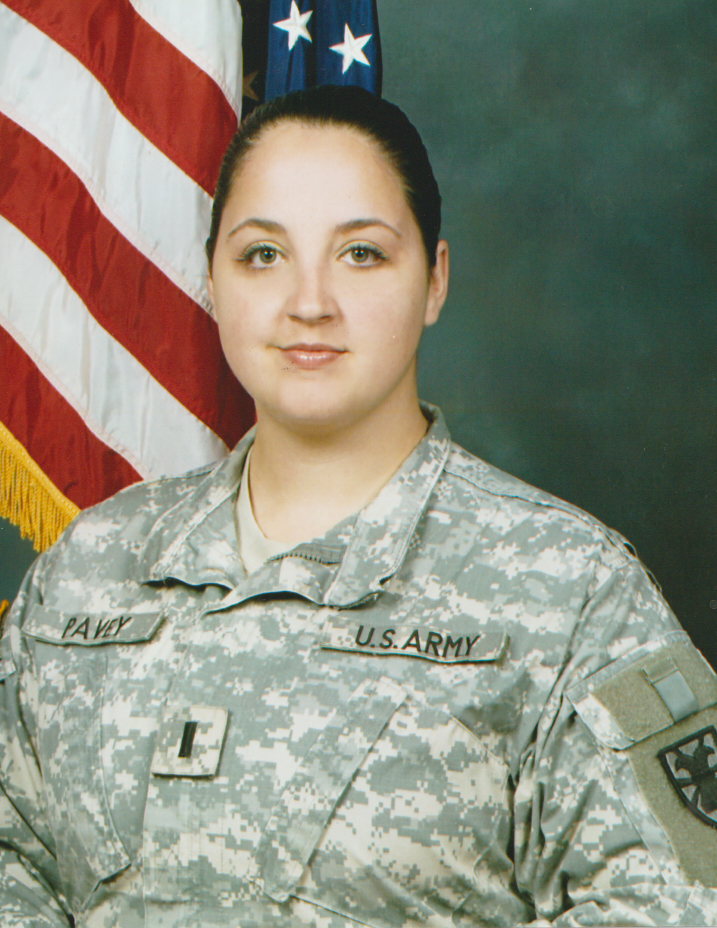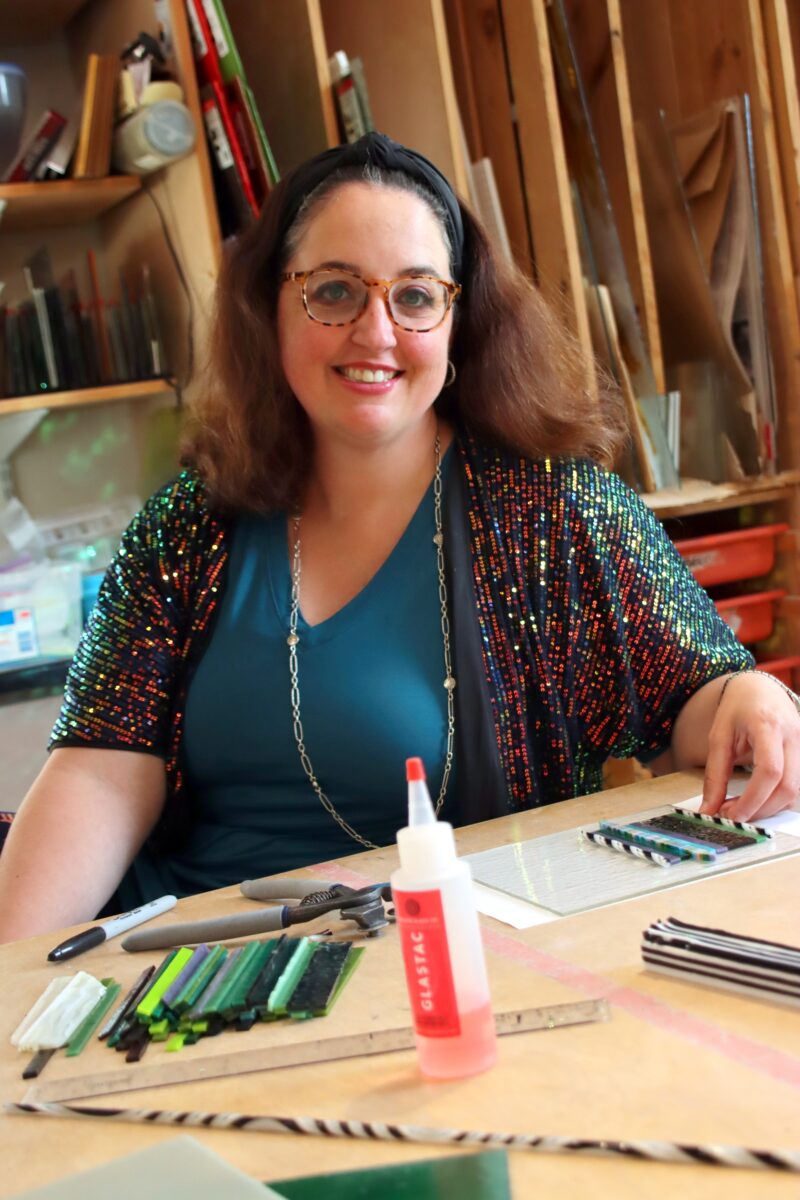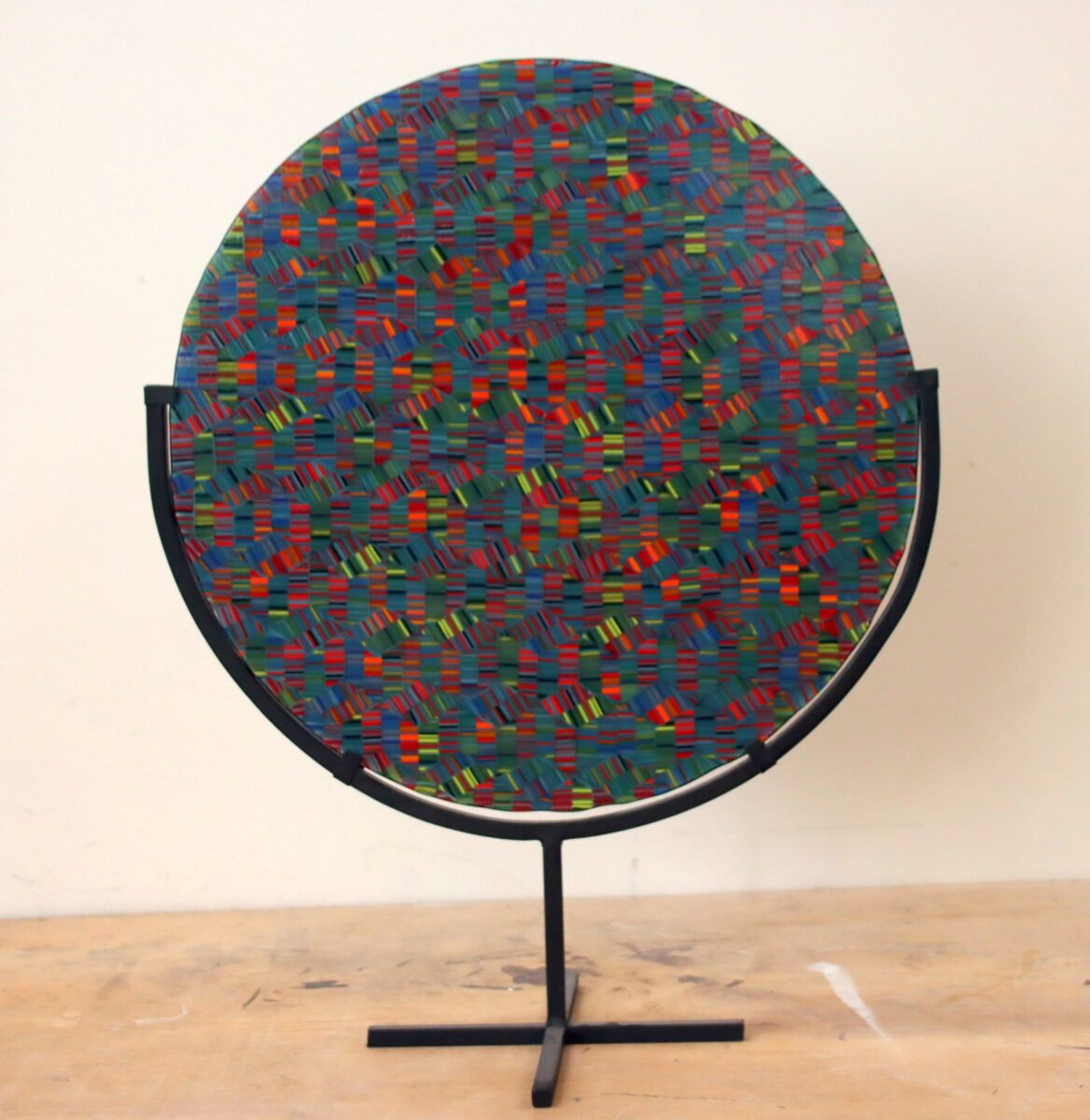A conversation with Clare Shepherd, Army veteran and glass artist
Clare Shepherd is a retired Army captain who discovered her passion for glass art after spending eight years in the military. During her time at Walter Reed National Military Medical Center and later at the Wounded Warrior Program at Fort Eustis, Shepherd sought creative outlets to heal and recover from multiple medical conditions, including post-traumatic stress disorder (PTSD) and severe depression. Initially, she engaged in activities like painting pottery through the Morale Welfare and Recreation program (MWR) at Walter Reed, which provided therapeutic relief and helped her step out of her isolation.
Encouraged by her mother-in-law, Shepherd explored Maryland Hall in Annapolis, where she discovered a glass program. Maryland Hall is a 2023 Creative Forces Community Engagement Grantee.
Shepherd was drawn to the complexity and challenge of working with glass. She immersed herself in the craft and eventually found herself at the Corning Museum of Glass in Corning, New York, taking classes.
“I really truly believe that if you want to learn a technique, you should learn from the best,” she explained. “The Corning Museum is the mecca for glass fusing and glass blowing. I got a scholarship for a summer class. It was one week long, and it changed my life.”
Through her dedication to the craft, Shepherd transitioned from a student to a teaching assistant and finally to an instructor at Maryland Hall. Following is a conversation that Creative Forces team member Santina Protopapa had with Shepherd about her journey as an artist and teacher.
I love watching people process through glass because it’s not only healing for them, but it’s also healing for me.
Clare Shepherd
What do you find in the experience of glass? What do you find in both the creation and the product that really keeps you involved in glasswork?
Glass is like doing a collage, but the final product is also something useful. In glass, I can make a dish, a piece of jewelry, or a sculpture. The feeling of creating in glass is that you’re making something that you can keep and cherish forever. It’s an art form that you can get a lot of use out of.
What is special for me is that in glass, I’m taking something that is hard. I’m cutting it up, arranging it, and putting it in the kiln. It’s melting to over 1600 degrees, and it’s changing or morphing into this final project. Molten glass is very exciting. There’s nothing better than taking something that is a solid that goes to a liquid and then just messing with it. It’s addicting.
Tell me about how you guide people into getting into glass.
I want to introduce glass to veterans like me. I want to give both men and women an outlet like I had, something that is super cool and gets them to think outside the box. When I first came back to Walter Reed from my deployment, I could barely tie my own shoes or brush my hair. Being able to work through the problem of creating a project in glass translates to how I solve problems in my real life. Whether I’m dealing with trauma or something else, I just take it one step at a time, paying attention to detail and getting that one task done so that I can move on to the next task.
That is what I love about glass — it helps me to be able to process my trauma and what I go through in a way that is creative and uses the creative side of my brain. When I first started taking glass classes, I would come to the class, and I wouldn’t talk to anybody. I would just sit in my spot and do my thing. But after a while, there’s a community that happens with glass. I started talking, and it might not have been about the Army or trauma or what happened to me, but just being there with other people from different walks of life and connecting with them helped me to come out of my shell.
That’s what I want to do for other people. I want to introduce them to this medium that is super expensive in an affordable way, free for veterans, and give them a chance to try to make a dish. I found that I have people who come to the very first class and then come to every single class offered thereafter. Why? Because they got addicted just like I did. They really enjoy creating glass art, and they grow with it and challenge themselves to think outside of the box. I love watching people process through glass because it’s not only healing for them, but it’s also healing for me.
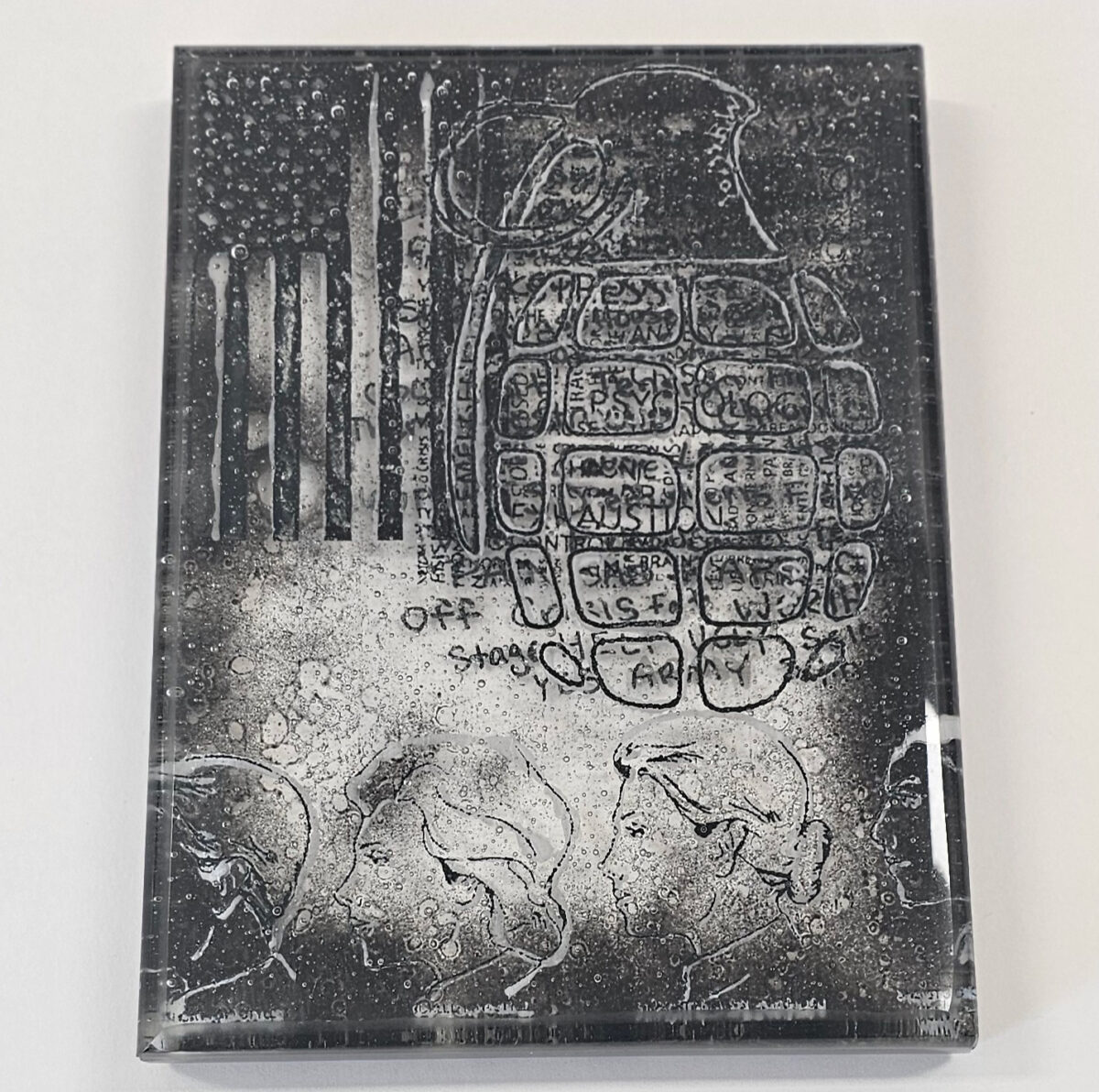
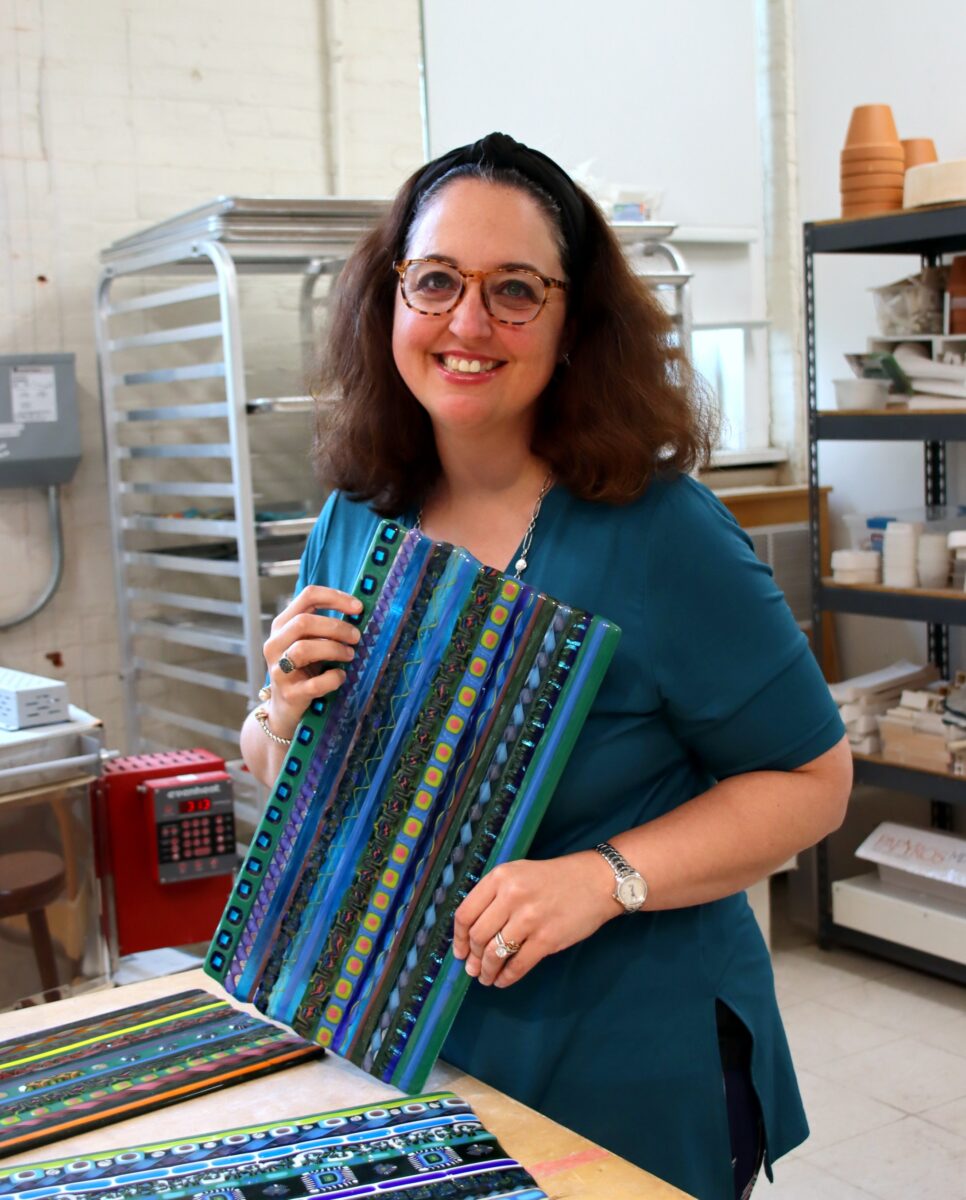
Tell me more about the process you witness as veterans develop their work in your classes.
What’s interesting is that in the military, everything is neutral beige, greens, grays, black, brown — not super attractive colors. One of the things that I love about glass is that you have such a spectrum of bright colors. With glass, you have access to all the colors of the rainbow. It really lets you utilize color in a way that’s super fun. When I first started doing glass, everything I did was a rainbow of colors. I don’t know if it was because I am gay as much as it was, “Hey, it’s a rainbow! I want to use all the colors.” As I settled in, I started to develop my own color palettes and patterns, and now I’ve been creating my own signature look.
I noticed that with new people who come and learn glass, on the first day, they say, “I’m just going to use all browns.” And then the next time they start to add a pop of color to it, they try to spice it up a little bit. And over time, I watch people grow by how they add color to their work. Color theory in itself is super therapeutic and super fun.
Tell me about the veterans you work with at Maryland Hall.
What’s great is that I never know who’s going to come through the door when I have a class. What is their MOS (military occupational specialty)? What is their background? What service were they in? Were they a Coast Guard? We have the Naval Academy here in Annapolis. I’ve had a couple of families that have come over from the Naval Academy to do classes, which has been really fun.
One of my favorite students is Wayne. He was in the service but was also a police officer who got injured. Wayne has been taking my classes since I started, and he has really grown. When he first started coming to classes, he was so thoughtful. He would make things for his wife. He made an anniversary present for her. Everything he was making was pink and white. By the end, he made this beautiful brown piece that sits on his dresser, and it’s his catchall for his keys and other items. He finally ended up making something for him, which was super special.
What advice would you give to other veterans or active-duty service members about the benefits of art making?
When you’re in the military, you are 110 percent committed to what you do in the military, and you are giving 110 percent to the mission. And a lot of times, you forget about yourself. Self-care is super important. One of the mistakes that I made after I got out of the military was that I spent a year before finding a job, and I literally was regressing. I was sitting on my couch. I was eating subs every day. I was playing video games, and I wasn’t challenging my brain in a creative way. Once I started introducing creativity and art back into my life, it changed me. It helped me to get out of bed. It gave me motivation. Art and creativity change you. It’s really important that you have a hobby that challenges your brain and makes you think outside the box.
Challenging my brain by doing art expanded my horizons in a new way and truly saved my life. Both the veterans in my classes and a lot of non-veteran elderly people who come and take my classes, as soon as they retire, they stop doing what they do, and they kind of lose their motivation or focus. My advice would be that you have to keep active and keep busy. It could be joining a class, whether it’s woodturning, ceramics, or another art form. I advise people to get an artistic hobby, something that keeps their brain active on a playful and fun level, because it will really change their lives and get them out of that slump.
Challenging my brain by doing art expanded my horizons in a new way and truly saved my life.
Clare Shepherd
What are you currently working on that you’re excited about?
I’m getting ready to take a class at the Corning Museum in imagery with glass. I’ll be learning how to take images, sandblast them, and put them into glass. I took this instructor’s class before and made a beautiful piece that represents what PTSD has done to me. It was a really fun piece. I’m excited to delve into it some more and make new pieces. It’s always hard because when you try to do something artistic with trauma, you never know how people are going to react to it. It really puts yourself out there in a vulnerable way.
What I love about glass is that you can do both abstract work and work that depicts literal themes. You can be abstract and have fun and just do color theory and pick colors, or you can be literal and make something that tells a story. For me, it’s finding the balance in both approaches. When I took [the Corning Museum] class before and did my PTSD piece, I felt like I was going to therapy every day that I had class. It was a lot to process. But now, as time moves on, as veterans, we get better and better at speaking our voices and sharing our stories. I’m excited to delve more into it.
Is there anything else you’d like to share?
For military people and veterans, as structured as we are, as disciplined as we are, it’s also really important to have a softer side and try something that’s outside your comfort zone. Just do something to develop that creative side of your life because it will really transform you and help you to open up and be a more well-rounded, better person. If it wasn’t for glass, I wouldn’t be alive. The girl who dragged me out of my room when I was at Walter Reed said, “Hey, you’re going to go and do something. You’re not just going to sit in your room and be depressed.” If it wasn’t for that moment, I wouldn’t be here. When I can, I do what she did and share my experience with people. When I’m doing something, I’m giving a service back.
Through glass art, I’ve discovered that the people in my classes end up bonding, talking, and becoming friends. It’s never intended that way; it’s set up to be a class that you attend and make a project, but somehow magic happens, and people bond and become friends and a community.
